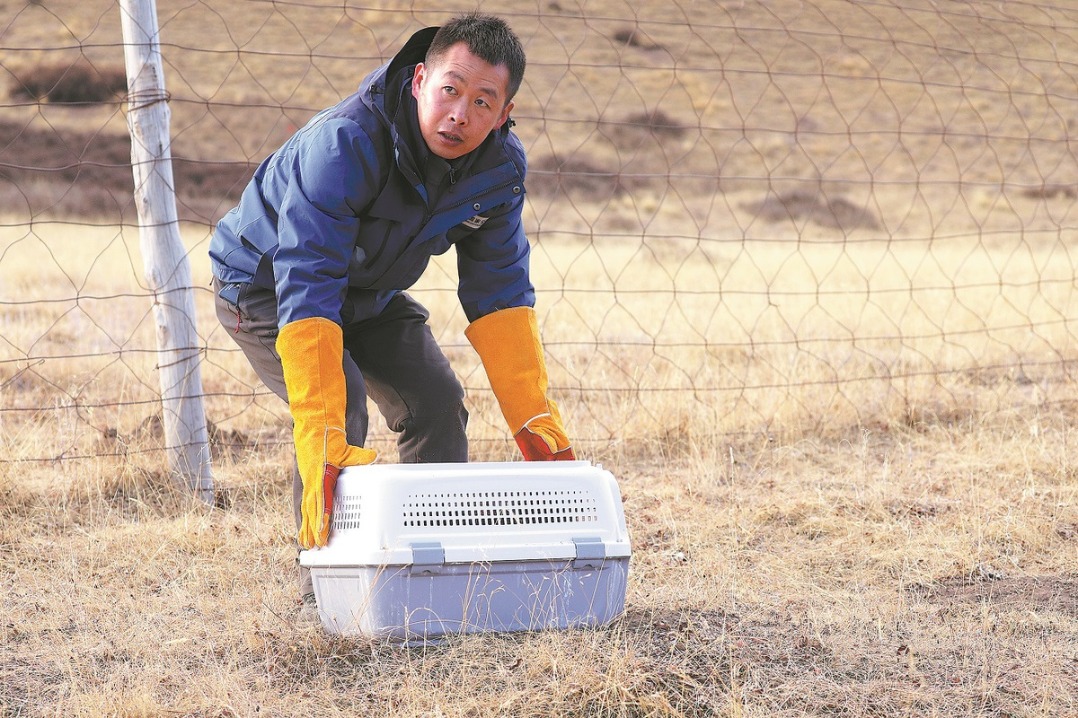Lunar rover sleeps after record travel


Yutu 2's scientific missions include surveying terrain, detecting minerals
China's Yutu 2 lunar rover has entered its eighth period of dormancy on the moon's far side and is in good condition after traveling 271 meters, according to China National Space Administration.
In a statement sent to China Daily on Thursday, the administration said the rover, China's second movable robot on the moon after Yutu, was switched to dormant mode at around 5:50 pm on Wednesday after receiving signals from ground control. Yutu 2 is part of the Chang'e 4 robotic probe.
Before its dormancy, the machine had traveled 271 meters on the lunar surface, more than double the distance covered by Yutu, which reached the moon in December 2013 and worked there until July 2016.
The administration said that on the lunar day that just ended, Yutu 2 and Chang'e 4's lander, which has also entered a dormancy period, obtained a great deal of scientific data.
A lunar day equals 14 days on Earth, and a lunar night is the same length. During the lunar night, the temperature falls below minus 180 C, and there is no sunlight to provide power to the probe.
Chang'e 4 was lifted atop a Long March 3B rocket in early December at the Xichang Satellite Launch Center in Sichuan province to make the country's fourth lunar exploration and the world's first expedition to the moon's far side, which never faces Earth.
The probe made a soft landing on the far side on Jan 3 and then released Yutu 2, the world's seventh moon rover, and also the first to get to the far side and survey the South Pole-Aitken basin, the largest and deepest known basin in the solar system.
The scientific tasks of the Chang'e 4 mission include low-frequency radio astronomical observation, surveying the terrain and landforms, and detecting the mineral composition and shallow lunar surface structure, as well as measuring neutron radiation and neutral atoms.
As no probe had landed on the far side before Chang'e 4, all scientific information obtained in the mission would be new, according to Zhang He, executive director of the Chang'e 4 program at the China Academy of Space Technology.
China's next lunar probe, Chang'e 5, will weigh about 8.2 metric tons and will be the largest and heaviest lunar probe ever built by the country. It will consist of four components - orbiter, lander, ascender and re-entry module. The probe will be sent by China's largest carrier rocket, Long March 5, from the Wenchang Space Launch Center in the island province of Hainan in the near future. It will collect lunar samples and bring them back to Earth.
If the Chang'e 5 mission succeeds, China will become the third nation to retrieve lunar samples, after the United States and Russia.
- Memory of father's life of struggle will never fade
- Descendants of Nanyang Volunteers strive to preserve legacy of wartime bravery
- Honoring history and victory on canvas
- 'Unsung heroes' in Anti-Fascist War remembered
- China's V-Day commemorations begin
- Stories of hardship empower spirit of generations




































